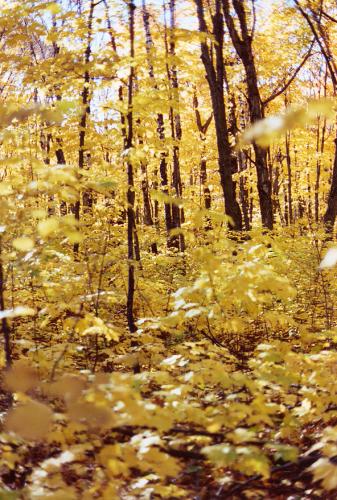Carrying capacity
The term carrying capacity, applied to a wildlife population, can invoke a cascade of values, selected science, and controversy. Teasing apart the elements of acrimony is an exercise in critical thinking.

The carrying capacity idea gets tossed around in a variety of ways, many of which are difficult to define and defend, if not outright incorrect. Carrying capacity related to white-tailed deer is likely the most common context in which the idea is used, and misused.
In some ways, defining carrying capacity might be theoretical. In other ways, it has practical implications. In any case, most people who use the term often find it hard to explain exactly what they mean. Notions of carrying capacity are largely value-defined, rather than science-defined.
Science-based evaluations of carrying capacity are difficult to find in the literature. Value-based evaluations are prolific. Both scientific and social definitions have legitimacy. The area of greatest conflict occurs when social values are mistaken for science.
Carrying capacity is the maximum number of individuals of a species that the landscape can support over time. That’s not too hard to understand. However, imbedded in this definition are a number of difficult questions. Do all species populations behave the same? Which landscape? Which season? How are other species impacted? How long in time? Does the maximum fluctuate? How frequently? For what reasons?
Research has shown that populations of different species can behave in very different ways. A species relates to its own kind and with other species. Non-living habitat elements, such as weather, can have huge impacts. Growth curves showing change from low numbers to high numbers have more than one shape.
Not all species populations show the classic rate of increase to a sustainable plateau. For most species, the curves don’t go flat or stabilize. Some species, such as white-tails, can irrupt and crash. Theoretically, these populations will stabilize in balance with their environment. However, most ungulate research has demonstrated a continuing cycle of irruptions and crashes.
When a population is maintained at their carrying capacity; what impacts does that have on other parts of an ecosystem? White-tails at high population levels can have negative impacts on the regeneration of timber species and understory plants, which serve as critical habitat for many other wildlife species. Simply because a landscape might be able to carry a certain number of animals . . . should it? When deer populations drop, that can be a good thing for an over-browsed environment.
An ecosystem’s ability to support a population varies widely. For most species in the north, winter is the season when food is scarcest and environmental conditions most rigorous. The mix of habitats and constant habitat change are key variables. It is unrealistic to expect things to stay the same in our actively dynamic natural environment.
Calculating a carrying capacity for a species requires knowledge of the species and its environment, a definition of the range size, and a sense of time measured in years or decades. Once determined, can all species be managed at a constant level? Are population irruptions and crashes natural? Or are these patterns caused by human influence? Can human perception and policy be flexible enough to tolerate these patterns?
Much more commonly, populations are managed using a set of social values. However, values are seldom universal and are not static. Deer populations probably provide the best examples and generate the most controversy.

Northern Hardwood regeneration typical in a stand with lower deer populations.
How much tree regeneration can be sacrificed before it is too much? How many car collisions are acceptable? How much risk to endangered species shall be tolerated? How much vegetation loss in parks and natural areas will be allowed? At what point is hunter satisfaction or dissatisfaction significant? Is a population crash a waste or merely nature taking its course? Is damage to vegetation permanent or does it recover after a period of time when deer populations are down? Can deer populations managed at artificially high populations prevent vegetation recovery? What is artificial? The list of questions continues.
Wolf carrying capacity also ignites heated discussions. The carrying capacity within a landscape is much higher than the social carrying capacity which residents will tolerate. However, people who don’t live with wolves often advocate for higher wolf populations in landscapes far from their own backyard. And why does wolf-killed deer generate such interest when cars kill many more deer with barely a whisper of concern?
Most wildlife and forest management systems are based on sets of societal values, using science-based data to achieve these values. The science that is used to support a value system should not be mistaken for science defining nature in a pristine sense or as a replacement for value judgments.
The body of science that enables foresters to grow tree plantations, maintain aspen stands, or accelerate old growth conditions reflects a need to satisfy demands of society. The body of science used to manage white-tail populations reflects current values of society held towards deer. Values change.
Science employed to support one side of an inflammatory issue is usually a misuse of science. The conflict is over values and should be debated as such. Science, when properly funded, can tell us, for example, about the level of biodiversity across a defined landscape. Societal values will tell us whether that level is appropriate or not.



 Print
Print Email
Email


